During the pandemic I’ve taken comfort in the timeless continuance of nature: Birds still migrate, stars keep their usual paths across the night sky, and kids sing the same old songs about diarrhea (okay, “comfort” might not be quite the right word for that last one). I've been out and about with my kids a lot, especially last spring and summer, trying to convince them to watch trees instead of Youtube. You can probably guess how far I got with that.
I’ve had better luck with some recent books about trees, though, particularly Peter Wohlleben’s Can You Hear the Trees Talking?, in which he presents for kids the same science he took up in his adult bestseller, The Hidden Life of Trees, about how trees communicate and nurture one another. Lita Judge gives the forest voice in The Wisdom of Trees, which consists of imagined free verse monologues spoken by individual trees, supported by non-fiction prose. And last but not least, Moira Butterfield’s Look What I Found in the Woods follows three kids on a hike, blending story, science, and seek-and-find to create a dynamic arborial reading experience.
Can You Hear the Trees Talking?
Look What I Found in the Woods
During my efforts to get the kids out of the house, I also added to a “collection” of interesting trees around town, and as usual, I don’t know a lot more than I do know. So what better time to turn again to my friend and fellow LPL-er, Jake Vail, a former arborist who was kind enough to let me pick his brain about some favorite local trees a few years ago. Jake will be leading a tree tour of Watson Park (aka the “Train Park”) on Saturday morning, May 22nd, at 10 a.m., in case you have any tree questions of your own to put to him.
Okay, Jake, let’s go treewatching.
Tree #1
Catalpa, 10th and Rhode Island
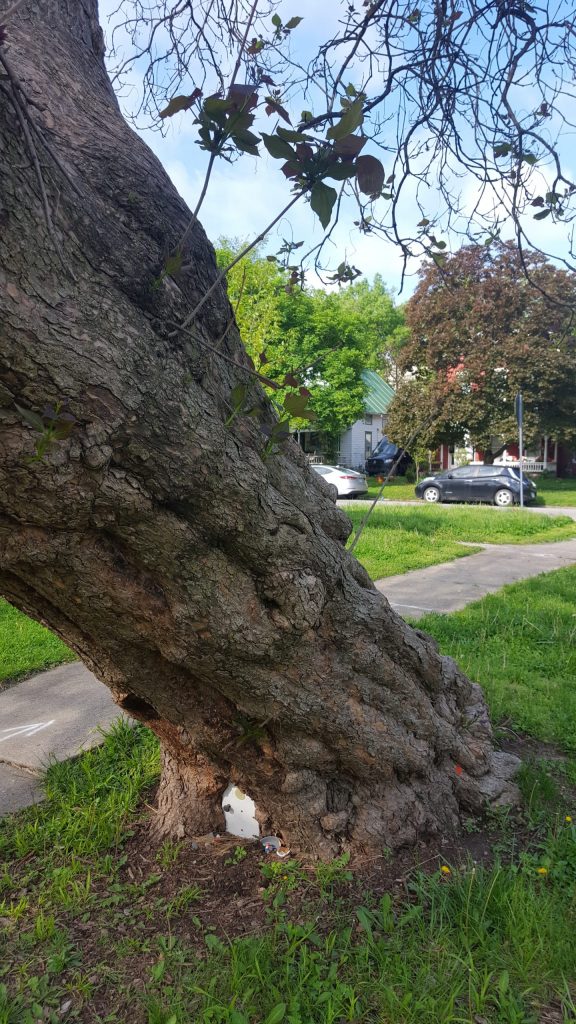
Dan: Someone pointed out this one to me after our last tree discussion, and it really is something. The obvious question is, why is it leaning like that, and are the gnomes who live in it somehow to blame? Also, at a certain point last summer, the area around this tree smelled a lot like stale air being let out of an old bike tire. Gnome B.O. was my first explanation, but I’m beginning to suspect the tree itself.
Jake: Cool! Arboreal CSI! My take: The many years of visible growth rings indicate that this tree was hit from the yard side (construction equipment?) as a young tree, but allowed to remain alive and askew and full of character. That tree has had an interesting life. Three cheers for the owner(s) for not cutting it down! I get tired of "lollipop trees."
And now, the Arboreal Word of the Day!: Silique. Sounds like a singer's name or something, but it's what botanists and snooty arborists call the long seed pods that hang down from catalpa trees in the fall. Now you don't have to call it a cigar tree.
Even more than their seed pods, or their big shady leaves, to me the most notable thing about catalpas is their big sexy flowers, which attract bees in the daytime and moths at night. Ridiculous numbers of winged papery seeds are the result, all packed tightly in the siliques, awaiting a strong Kansas wind.
As for that smell, let me quote from Wikipedia:
"The tree is the sole source of food for the catalpa sphinx moth (Ceratomia catalpae), the leaves being eaten by the caterpillars. When caterpillars are numerous, infested trees may be completely defoliated. Defoliated catalpas produce new leaves readily, but with multiple generations occurring, new foliage may be consumed by subsequent broods."
It won't be long before you'll see big green and black caterpillars all over the catalpas, drawing fishermen and inquisitive kids from all over (the caterpillars are famous as fish bait.). I'm guessing the odor you detect is caterpillar poop in various stages of decay. The gnomes are blameless.
Tree #2
Pawpaw, Monarch Watch Garden, University of Kansas, West Campus
Dan: I’m convinced pawpaw trees are transplanted from Oz or some other storybook land, so tinged with magic is everything about them, from their goofy name to the singular taste of the fruit they produce. Instead, they grow right here in Kansas, and have for millennia, another argument for an idea that has dawned on me slowly over the course of a life lived in this state, that there is more magic in Kansas than the Emerald City if only one looks.
I learned most of what I know about pawpaws from a book given to me by a good friend, a copy of which we also have in the library, Andrew Moore’s Pawpaw: In Search of America’s Forgotten Fruit. What I wonder most about pawpaws is, given that they thrive in Kansas and produce a fruit so tasty and versatile it has been called the “prairie banana,” why don’t we all have them in our backyards?
Jake: Why not a pawpaw in every yard, indeed?
Well, unlike the catalpa, they're pollinated by flies, not bees or butterflies or hummingbirds or moths. And the flies are attracted because...the flowers smell like rotten meat. Who would plant a "Carrion-Fly Garden"? Also, pawpaws spread mostly by suckering, which perfect lawn proponents might object to.
Pawpaws are also self-incompatible, or obligate outcrossers (sorry, one can't talk plants without plant sex), so it pays to plant several. Therefore, more suckers and more flies around the barbecue.
But - magical pawpaw fruit! Yum! As a bonus, deer don't like the trees. Pawpaws are the (unofficial) winner of the Coolest Tree Flower prize (sorry catalpa), and while small and not sexy, the peculiar little flowers are obvious because they open before the leaves come out.
And you know, Kansas was a storybook land: Once upon a time, before gnomes, pawpaws were spread by gomphotheres, ground sloths, and mastodons! And, later, George Washington, who planted pawpaws at Mt. Vernon. So if you want to be like the Father of our Country, or prepare for the age of genetically engineered paleolithic resurrections and grow some pawpaws on your estate to entice the mastodons, maybe put some roadkill under the trees for better pollination.
Dan: Time for someone to write a book called When Good Trees Smell Bad. I've heard it said that pawpaw seeds germinate best after passing through the gut of an animal. That explains the ground sloth and mastodon connection. Maybe George Washington, too?
Tree #3
Bur oak, 1220 E. 12th St
Dan: Studio 804, the sustainable architecture program at the University of Kansas, designed this home to incorporate the state’s 2nd largest bur oak. Such rankings were begun in Kansas by legendary KU botanist, H.A. “Steve” Stephens, whose classic guidebook, Trees, Shrubs, and Woody Vines of Kansas included them as an appendix (a new edition of that book has recently been published, by the way, and I never pass up a chance to recommend it). These rankings are now kept by the Kansas Forest Service, which uses a formula incorporating trunk circumference, height, and crown spread to determine its state champion trees.
Trees, Shrubs, and Woody Vines in Kansas
Trees, Shrubs, and Woody Vines in Kansas
Currently, the largest bur oak in the state resides in St. George, just east of Manhattan on the Kansas River, but I can’t imagine it is any more magnificent than this one. Every time I see it, I wonder about the lifespan of bur oaks, and how old this tree may be. Could Quantrill have passed it at a murderous gallop? Did Langston Hughes ever look into its heights, working words in his mind that will survive even longer? Or has it been around since way before people even spoke English around here? Which begs another question: Since we now know trees can talk to and help each other, do they also have mid-life crises? Okay, maybe I’m just projecting.
Jake: The first thing that strikes me about this oak is its beautiful HUGE spreading canopy. The second thing is: Isn't it cool to have such a tree for a neighbor? Seeing this majestic elder watching over all the little sprouts around town, I can't resist plugging a brand-new book, called Finding the Mother Tree, by forest ecologist Suzanne Simard. An inspiration for Richard Powers and Peter Wohlleben, Simard knows the dirt on the Wood Wide Web.
I know of another bur oak, not far away, with a similarly massive trunk but looking nothing like this one. Why? We have to go back to when this mighty oak was a little acorn. Well, maybe not that far, but we can tell right away that it grew for most of its life out in the open. No fighting for sunlight with a bunch of scrappy saplings or under an existing overstory means its branches grew all around, and not crowded together as they reached for the sun.
Because it's maybe 300 years old and Lawrence has been Lawrence for only 167 years, it's a safe bet that this is a native species and not some tree imported from elsewhere. Quantrill could have seen it through the smoke of the fires he set. Langston Hughes certainly would have enjoyed its shade. The German POWS, incarcerated just a short ways away, must have seen it. (Finding a tree's age requires extracting a core and counting the tree rings, which most arborists would rather not do, but I read that bur oaks can live up to 400 years.)
One could go on about oaks, and many have. A couple recent examples: Douglas Tallamy, The Nature of Oaks and James Canton, The Oak Papers.
Though it's on private property, it's visible from the street. I encourage folks to swing by and take a look at this magnificent tree.
Tree #4
Littleleaf linden, SW corner of Veterans Park, 19th and Louisiana St.
Dan: Scanning the list of state champion trees, I noticed a few right here in Douglas County, including one that remarkably stands less than a mile from where I live. The largest littleleaf linden tree in Kansas is located in the southwest corner of Veterans Park, a place I’ve taken my kids to play hundreds of times. I’ve probably driven by it a few thousand times more, never knowing what kind of tree it was, nor that it was a giant among its kind. I love seeing this tree now, but what I love even more is the idea it demonstrates, that it’s never too late to discover the extraordinary hiding in plain sight. Among the highest hopes I have for my kids in this life is that they never stop seeking the rush of wonder that brings.
As for littleleaf linden trees, I must admit I know very little about them. A bit of quick research tells me they come from a genus of trees commonly known as basswoods here in America, which produce some of the world’s best wood for carving. Arborday.org also notes that littleleaf lindens are to be avoided after dark in Scandinavia, due the the folk belief that they harbor elves and fairies. Unlike the catalpa, though, I see no signs of mythical habitation. What do you think, Jake? Anything living here?
Jake: Excellent! A champion, hiding in plain sight. Lindens also hide behind a bunch of names, just to mix things up: linden, lime, tilia, and basswood. Go figure. Never mind that there are also big-leafed lindens. More on those later.
I don't know about elves and fairies, but lindens must be loaded with tiny paratroopers. Look at their weird flower/seed arrangement. After bees pollinate the heavy load of sweet-smelling little flowers (and bees love lindens), nutlets develop. These are attached beneath droopy pale green bracts, which act like one-bladed versions of the more familiar maple keys, also known as samaras -- or what your kids probably call helicopters. A Kansas wind will send the bracts, nutlets, and their invisible paratroopers twirling off to Nebraska, jostling with the catalpa seeds as they go.
As an aside, it seems fitting that a tree with at least four names that throws its seed any way the wind blows grows right next to one of my favorite quirky Lawrence landmarks: the sundial with no numbers. As Einstein said, time is an illusion.
Tree #5
Sycamore, Watson Park, just north of the basketball court

Dan: For our final tree we’ll head back to the Library, where just a few hundred yards to the west stands one of the biggest sycamores I’ve ever seen. The state champ, located near Carbondale, is 23’ 9” in circumference. I measured this one recently and it's 12’ 7” around. Still, it’s an imposing figure, as much a landmark as the Old 1073 locomotive it has stood guard over for as long as anyone can remember. Since this will be one of the trees Jake tells us about during his Watson Park tree tour this Saturday morning, I’ll just stop here and let him give a little more sycamore lore.
Jake: Another massive urban resident! I'd like to note (and tip my hat to Dan) that all five of these are trees native to this area. One's a champion you drive by all the time and probably haven't noticed. Another is almost a champion, and certainly looks the part. The five showcase weird fruits and nuts and nutlets; extremely different leaves; and flowers ranging from diminutive to oversized, cool to sexy, and bee-friendly to fly-attracting, wafting smells ranging from sweet to funky.
The sycamore, though, seems almost sedate. Stately. You've seen the bright white young bark of sycamores in winter, usually along waterways, and though it may not seem it at first, this one's roots are well-watered, too. The city has mapped a dozen urban watersheds, and this tree stands in the middle of one that rolls down from Mt. Oread to the Kaw.
Look up into this tree and soon you'll see little tiny balls developing - achenes, or seed clusters, that will hang on over the winter like ornaments, then fall as the weather warms and the spring rains come. They may also break apart while still up in the tree, the individual seeds drifting on fuzzy little tufts - more parachutes! Amazing how many Kansas tree seeds are spread by the wind.
Sharp-eyed arbornauts will notice that there are three other sycamores nearby, on the south side of the Post Office. Compare and contrast. While you're at it, note the three young trees right by the sidewalk north of the giant sycamore: these are the aforementioned big-leaf lindens, which you are now able to compare and contrast with the State Champion little leaf linden.
Dan: One thing I notice all these trees have in common is that they are among the largest and oldest of their kind to be found around town. In this year without precedent for most of us humans, a tall tree gives comfort in addition to beauty and oxygen. Here is a living thing that’s seen everything the world can throw at it, but keeps bringing forth leaves each spring and dropping them each fall anyway. While my kids may not be interested in looking at the largest littleleaf linden in the state, they have their own way of appreciating trees. In our big front yard oak tree we now have four different swings hanging from ropes tied to high branches. Before the pandemic, we had only one. Blessings, like wonders, hide in plain sight, too, especially in times of trouble.
-Jake Vail is an Information Services Assistant, and Dan Coleman is a Collection Development Librarian at Lawrence Public Library.

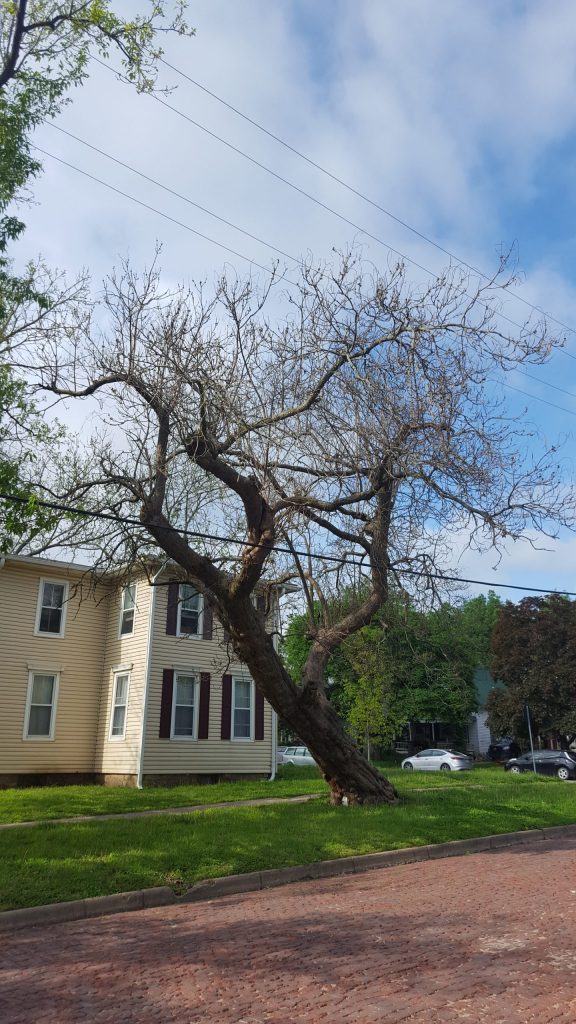


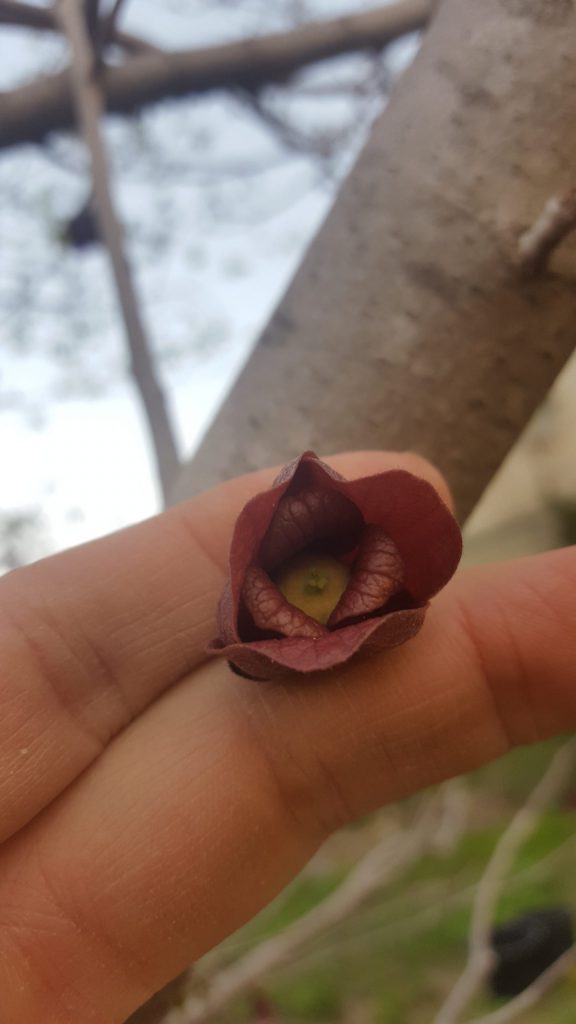
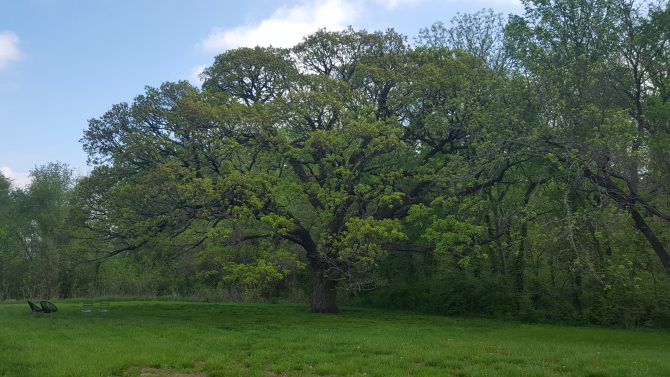

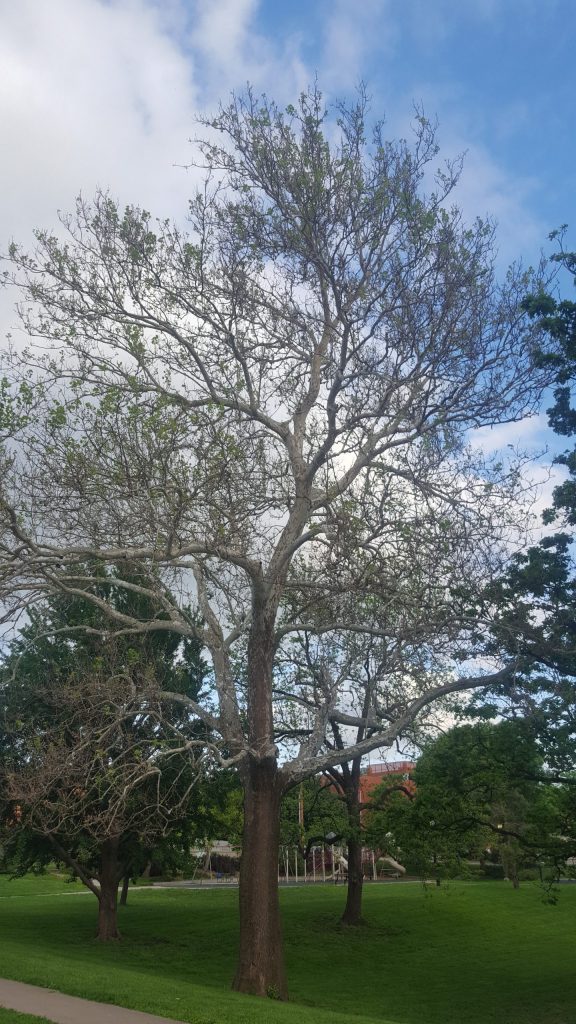


Add a comment to: More Interesting Trees